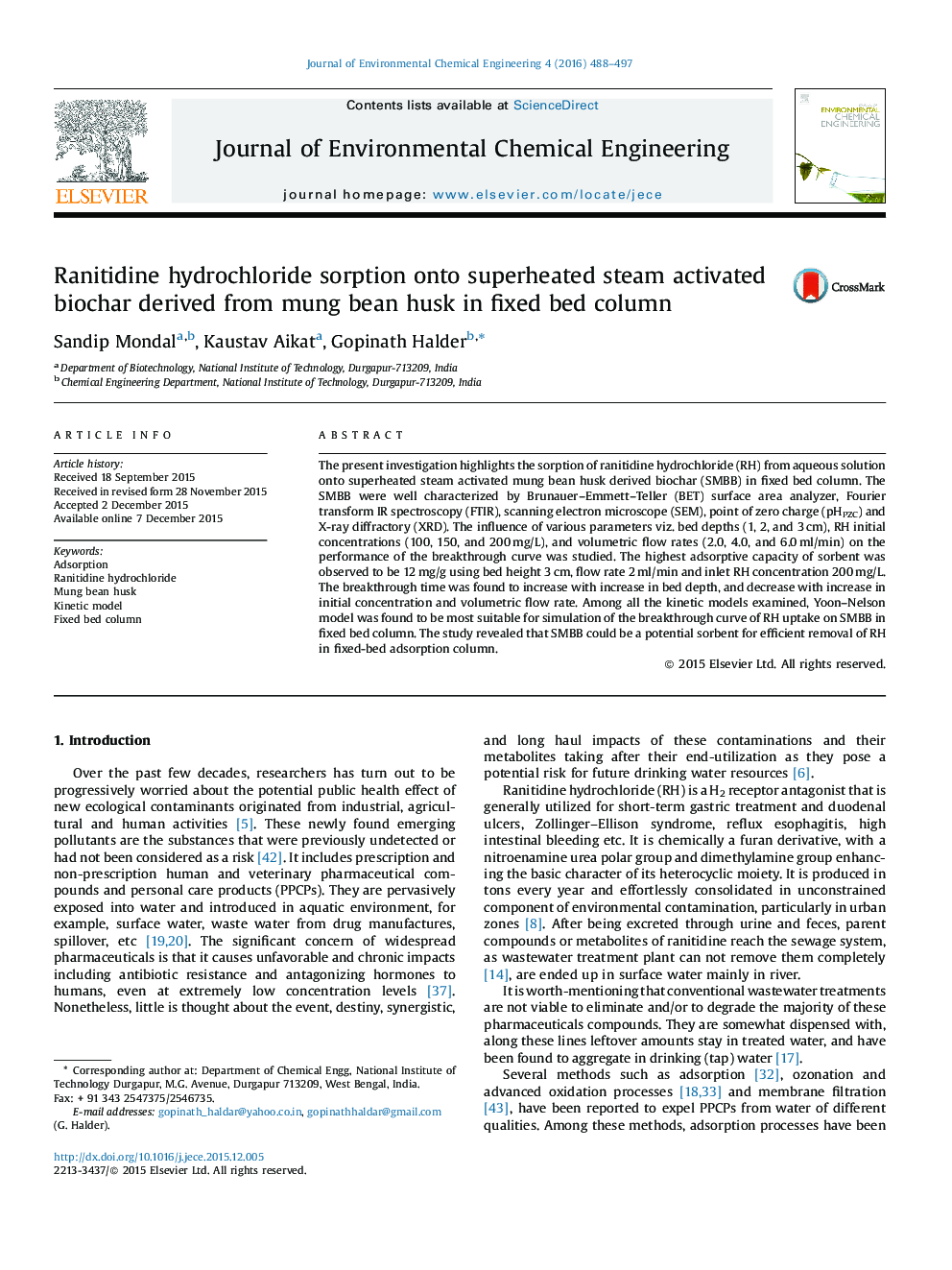| Article ID | Journal | Published Year | Pages | File Type |
|---|---|---|---|---|
| 221903 | Journal of Environmental Chemical Engineering | 2016 | 10 Pages |
•Steam activated biochar (SMBB) was prepared from mung bean husk waste.•Ranitidine hydrochloride upto 200 ppm was adsorbed in fixed bed column by SMBB.•Maximum adsorptive capacity of the SMBB was found to be 12 mg g−1.•The best fitted model to predict breakthrough curve was Yoon–Nelson model.•Yoon–Nelson model provides least error in analysis of error function.
The present investigation highlights the sorption of ranitidine hydrochloride (RH) from aqueous solution onto superheated steam activated mung bean husk derived biochar (SMBB) in fixed bed column. The SMBB were well characterized by Brunauer–Emmett–Teller (BET) surface area analyzer, Fourier transform IR spectroscopy (FTIR), scanning electron microscope (SEM), point of zero charge (pHPZC) and X-ray diffractory (XRD). The influence of various parameters viz. bed depths (1, 2, and 3 cm), RH initial concentrations (100, 150, and 200 mg/L), and volumetric flow rates (2.0, 4.0, and 6.0 ml/min) on the performance of the breakthrough curve was studied. The highest adsorptive capacity of sorbent was observed to be 12 mg/g using bed height 3 cm, flow rate 2 ml/min and inlet RH concentration 200 mg/L. The breakthrough time was found to increase with increase in bed depth, and decrease with increase in initial concentration and volumetric flow rate. Among all the kinetic models examined, Yoon–Nelson model was found to be most suitable for simulation of the breakthrough curve of RH uptake on SMBB in fixed bed column. The study revealed that SMBB could be a potential sorbent for efficient removal of RH in fixed-bed adsorption column.
